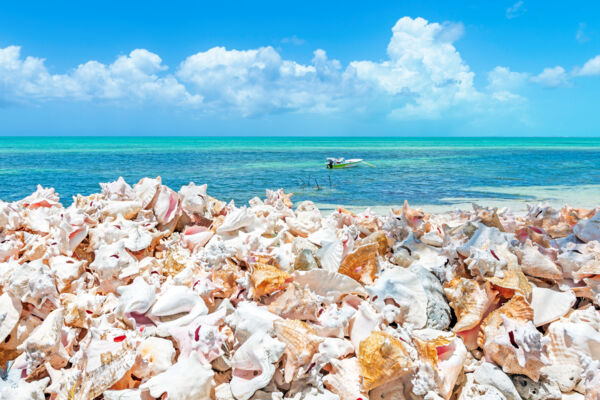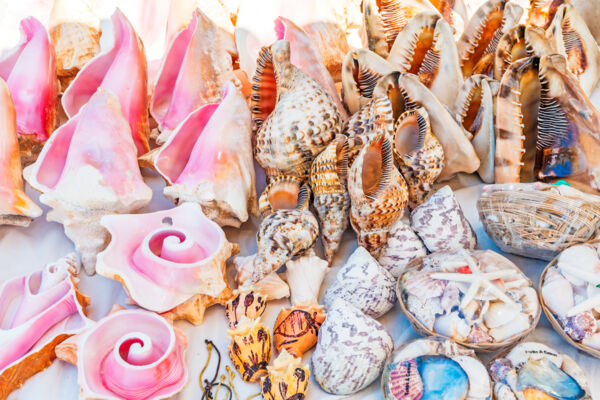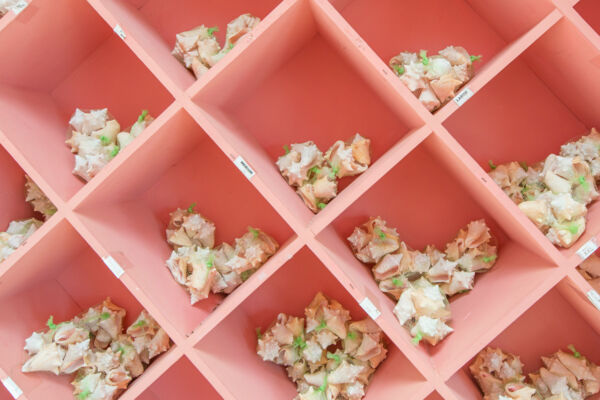Buying, Collecting, and Exporting Conchs, Shells & Coral

Summary
- Regardless of whether the conch fishing season is open or closed, visitors are allowed to export up to 3 conch shells (that must meet a minimum shell length of 7 inches or 18 cm), conch pearls, and manufactured conch shell products.
- Export of more than 3 shells requires a CITES permit, which may be applied for through the Department of Environment and Coastal Affairs (DECR). It’s typically easy to obtain a CITES permit for items exported for personal use.
Background of Restrictions
The queen conch (Aliger gigas) creates a beautiful shell that’s a very popular souvenir of visits to the Turks and Caicos Islands. Other species of conch, including king helmets, hawkwing conchs, and milk conchs, as well as other smaller shells and corals, can be found on our beaches and for sale in shops.
It’s important to be aware of the export restrictions (and import restrictions in your home country) regarding this animal. It is illegal to export conch meat, juvenile conch shells, and more than 3 mature shells per person outside of the open season (usually mid-July to mid-October).
Endangered Status of Conch

The Caribbean and the Turks and Caicos Islands have suffered from the overfishing of the queen conch, and this giant sea snail is now protected under the international CITES Treaty. As such, the exportation of the animal, shell, or souvenirs derived from the shell (such as jewelry and cups), requires a permit.
This animal has been listed in the CITES (Appendix II) treaty since 1992, but for many years enforcement of the law was lax and it was possible to purchase (or collect) the shells and export them without issue. However, enforcement has become stricter and any conchs found during a customs inspection when leaving the Turks and Caicos Islands that violate the regulations will be confiscated.
We are unaware of any prosecutions of persons attempting to export conch shells without a permit (action taken is simply confiscation of the restricted goods).
See Environmental Conservation for an overview of threats and conservation efforts regarding the Turks and Caicos Environment.
Buying Conchs, Shells and Corals

Many shops sell conch shells and conch souvenirs. A permit is required if you wish to export more than 3 conch shells, regardless of if the items were purchased in a shop.
The gift shops and art galleries in Grace Bay are the best locations for buying smaller and less-common seashells.
Don’t Overpay!
Conch is one of the primary locally caught seafood products in the Turks and Caicos, and is collected in high volume. To remove the conch from its shell, the standard practice is to ‘knock’ a slit in the upper part of the shell, so the animal can be removed. Knocked conchs have essentially no value in the Turks and Caicos, and are discarded by the thousands in many areas. Beach vendors often have displays of such damaged shells with high price tags.
Mature damaged conch shells that have had the animal removed in the typical method can be found at many fishing communities, with piles of such shells in areas where fishing vessels dock or are anchored.
Obtaining Permits and Exporting
To export more than 3 conchs and other certain shells, you can obtain a permit by visiting the Department of Environment and Coastal Affairs (DECR) on Providenciales. It is not possible to obtain permits online. Other types of shells require a permit which varies depending on quantity and species.
Coral
Coral of any sort cannot be legally taken from the country, and permits will not be granted. Upon entering, customs in many countries will seize any coral found, and penalties may be incurred.
Collecting Conchs, Shells and Corals
It is a criminal offense to take shells or coral from a protected area, which includes national parks, nature reserves, and historical sites.
Many popular beaches are part of a protected area, including Grace Bay Beach, Leeward Beach and the Bight Beach on Providenciales, and Governor's Beach on Grand Turk. See Providenciales National Parks for map and location details.
